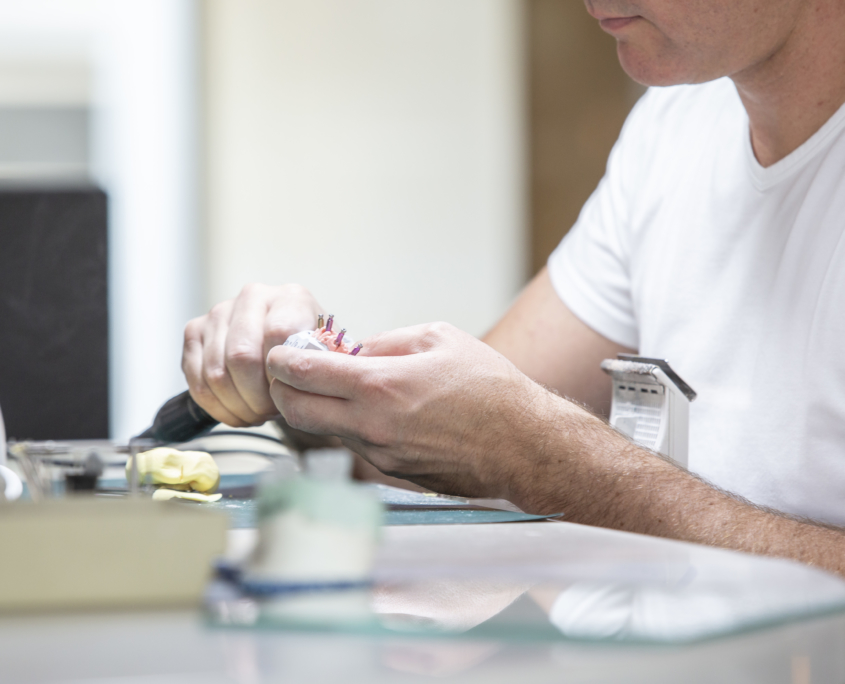For sliding work, the dental laboratory uses semi-finished products, which are then brought to the required finish in the lab.
A partial denture typically offers good stability as it can be anchored to existing solid teeth. Partial dentures often include metal clasps to secure them to the remaining teeth. Special attachments (sliders) on solidly crowned remaining teeth provide a cosmetic advantage due to the small mechanical connection point. While clasps anchor the prosthesis in a clasp denture, the sliding prosthesis involves crowning the tooth, and a slider is attached to the teeth to anchor the dental prosthesis. Dentures can also be attached to an implant or dental implant.
A telescopic/conical prosthesis is a dental prosthesis that is attached to a tooth crowned with a metal cone (milled from 0 to 4 degrees). For telescopic dentures, the tooth must be crowned, and the prosthesis is placed on the tooth crowns.
The fabrication of a combination prosthesis is a “combination work” that can be applied to natural teeth or dental implants by the dental technician in the dental laboratory. High-quality connector parts like telescopes eliminate the usual and unaesthetic clasps (found in clasp dentures as an economical solution), making the dental prosthesis nearly invisible in the remaining dentition. A partial denture with clasps, while the simplest and most affordable method of attachment, is not a stable option compared to bars, sliders, or telescopes and also wears down the natural tooth enamel. The use of invisible connector parts also improves the anchoring stability of the removable prosthesis and often provides greater wearing comfort by eliminating structural prosthesis components.



